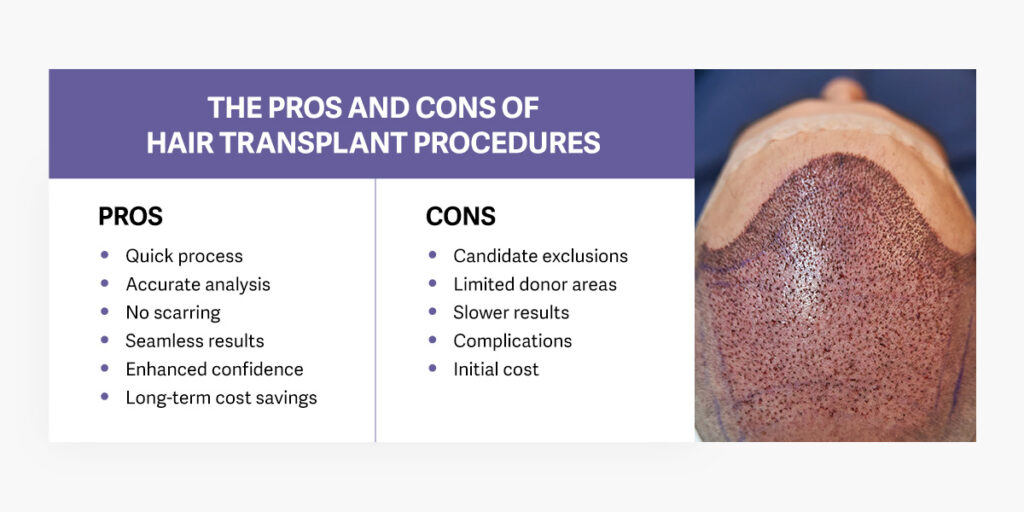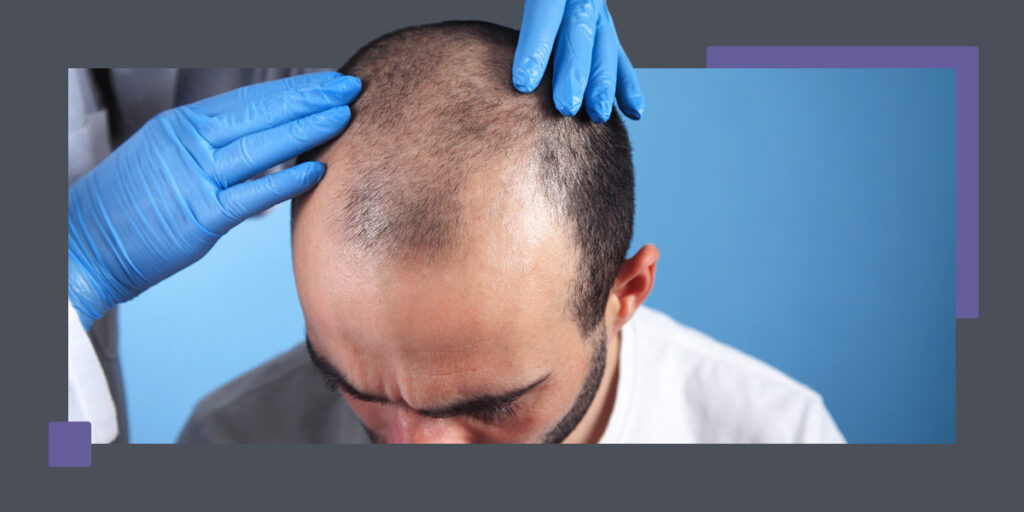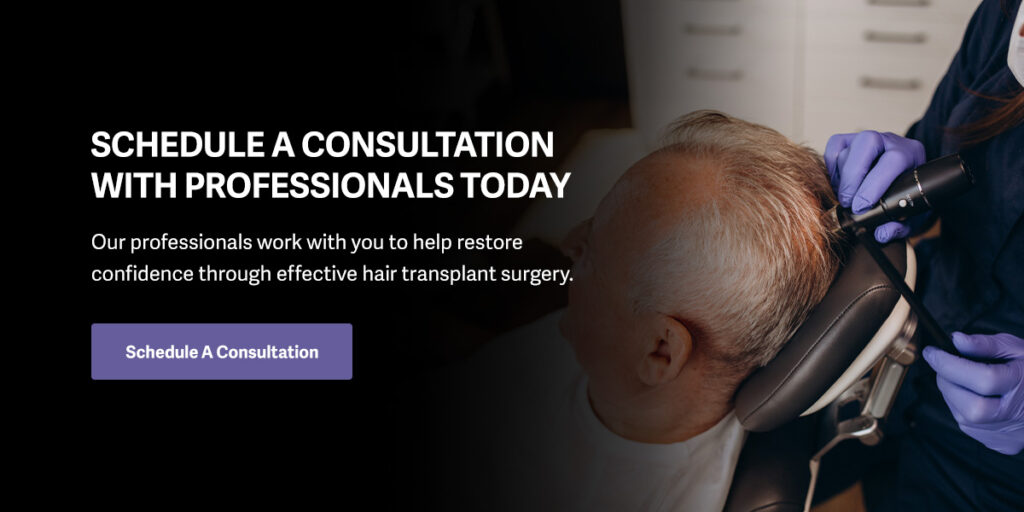Hair loss can affect your self-confidence. You may have tried different medications, treatments or pricey shampoos with no success. A minimally invasive hair transplant could be the answer you’re looking for. Before undergoing any procedure, weighing the benefits and drawbacks is important.
Explore hair replacement pros and cons so you can make an informed decision.
The Facts About Hair Loss
Androgenetic alopecia (AGA), or male pattern hair loss (MPHL), affects two-thirds of U.S. men by age 35. Around 85% of men experience thinning hair by age 50. Although more common in men, around 30 million women in the U.S. experience female pattern hair loss (FHL).
Treatment Options
There are two FDA-approved medications to treat AGA in the U.S.:
- Minoxidil: Rogaine is a vasodilator, increasing blood flow to the scalp to enlarge the hair follicles. Side effects of the topical treatment include itching, tingling or a rash. The FDA has not approved oral minoxidil due to serious side effects, including cardiac issues. Vasodilators may not be suitable for patients with heart or blood pressure issues.
- Finasteride: Oral finasteride blocks dihydrotestosterone (DHT), a hormone that contributes to hair loss. Its more severe side effects include skin rashes, dizziness, depression and erectile dysfunction.
These prescriptions only offer results for as long as you continue to use them. Stopping the medications halts hair growth and causes the loss of any new growth. Hair transplants offer a more permanent solution.
FUT vs. FUE Transplants
Two common hair transplant techniques are follicular unit transplantation (FUT) and follicular unit extraction (FUE):
- FUT: The surgeon removes a strip of skin together with the hair follicles for harvesting. The removal of the skin causes pain and scarring.
- FUE: Advanced robotic technology extracts individual hairs from the sides and back of the head. The surgeon implants the harvested follicles in the balding or thinning areas. FUE is less painful than FUT and leaves no scars.
The Pros of Hair Transplant Procedures
FUE is the best new hair transplant technology available for male pattern baldness. Robotic imaging technology identifies the ideal follicles for extraction and implantation.
The ARTAS® Robotic Hair Transplant procedure has significant advantages over other methods:
- Quick process: The ARTAS system uses algorithms to speed up the extraction process.
- Accurate analysis: ARTAS analyzes follicle features, including angle, orientation, distribution, density and direction. This process increases efficiency and produces excellent results when compared with other procedures.
- No scarring: The precision of robotic hair transplants eliminates linear scars.
- Seamless results: Using hair follicles from the patient’s body blends with hair for a natural look. Unlike many other restoration techniques, hair transplants offer long-lasting results.
- Enhanced confidence: Studies show that hair transplants can increase self-esteem and life quality.
- Long-term cost savings: Hair transplants require no maintenance or repeat product purchases. They can be more cost-effective over time than other treatments.
“Robotic hair transplant has greatly increased the efficiency of follicular unit extraction procedures,” says one doctor from Palo Alto. “It allows us to identify the best candidates quickly and accurately, and for a procedure like this, which can be time-consuming, it’s a major bonus for the patient.”

The Cons of Hair Transplant Procedures
While FUE is generally a safe and effective solution, like any procedure, it carries risks. The drawbacks of hair transplant procedures include the following:
- Candidate exclusions: ARTAS’ imaging technology has less success with light or curly hair.
- Limited donor areas: Traditional FUE techniques can extract follicles from any place where hair grows. ARTAS harvests from the sides and the back of the head only. However, these are the most ideal areas for hair follicle extraction.
- Slower results: After transplantation, implanted hairs undergo a loss and regrowth cycle. Patients can expect full results within 12 to 18 months following the procedure.
- Complications: Surgical procedures can involve risks like infection. Choosing a skilled surgeon and precise robotic technology minimizes these risks.
- Initial cost: High-quality hair transplant procedures come at a price. However, reputable practices often offer finance options to make this surgery more accessible.
While there are some drawbacks, ARTAS FUE has been a success for many patients. When weighing the pros and cons of hair transplant procedures, consult an experienced surgeon to address any concerns.
Is a Hair Transplant Right for You?
If hair loss impacts your self-esteem and quality of life, a hair transplant may be a solution. Ideal candidates must have enough healthy hair in the donor area. Realistic expectations about the outcomes and patience are key. Remember, results can take over a year to materialize. A hair restoration professional can determine if you are an appropriate candidate.




